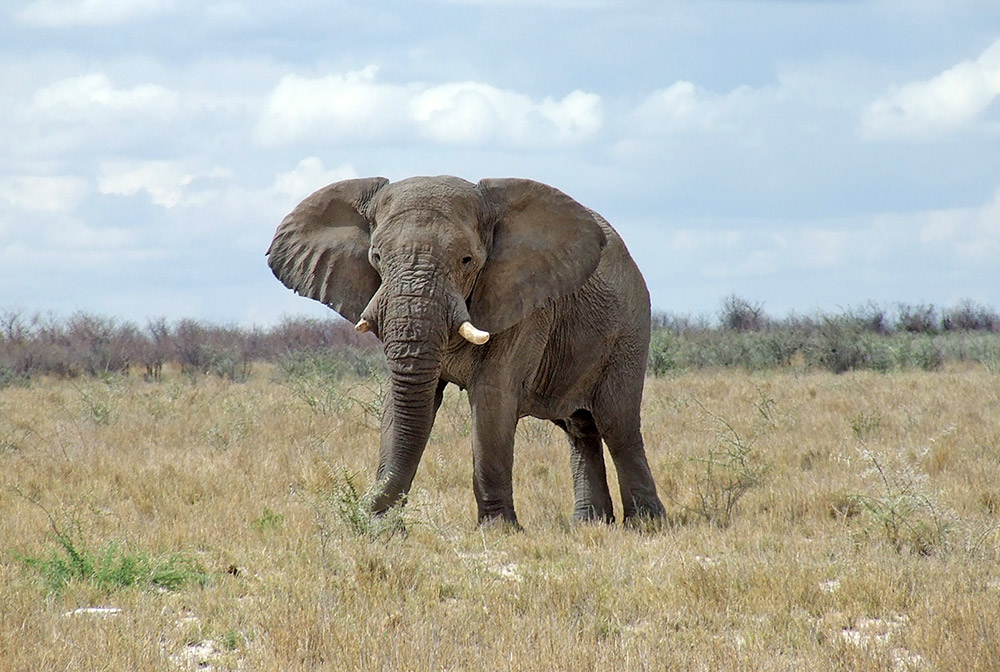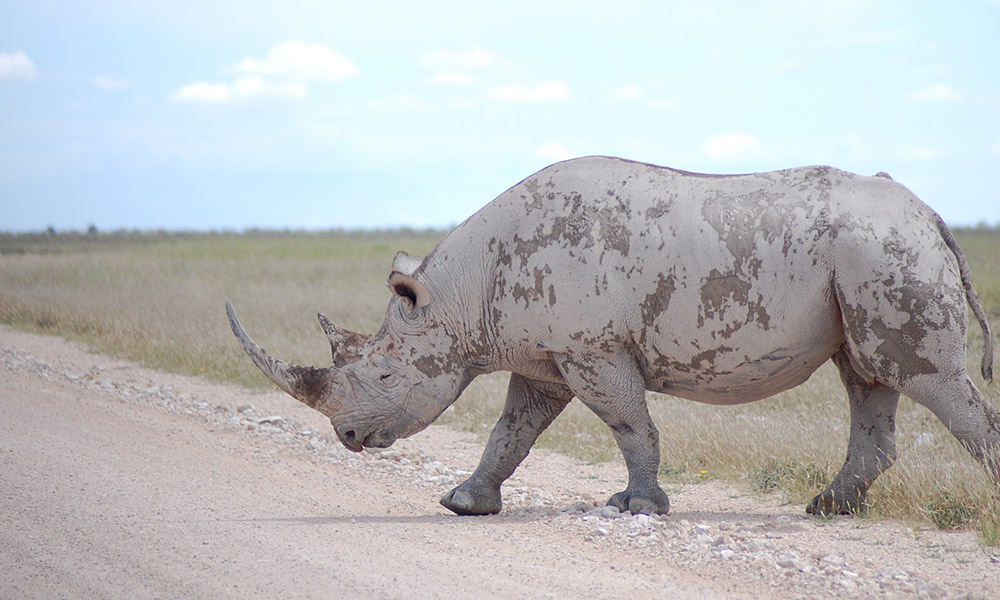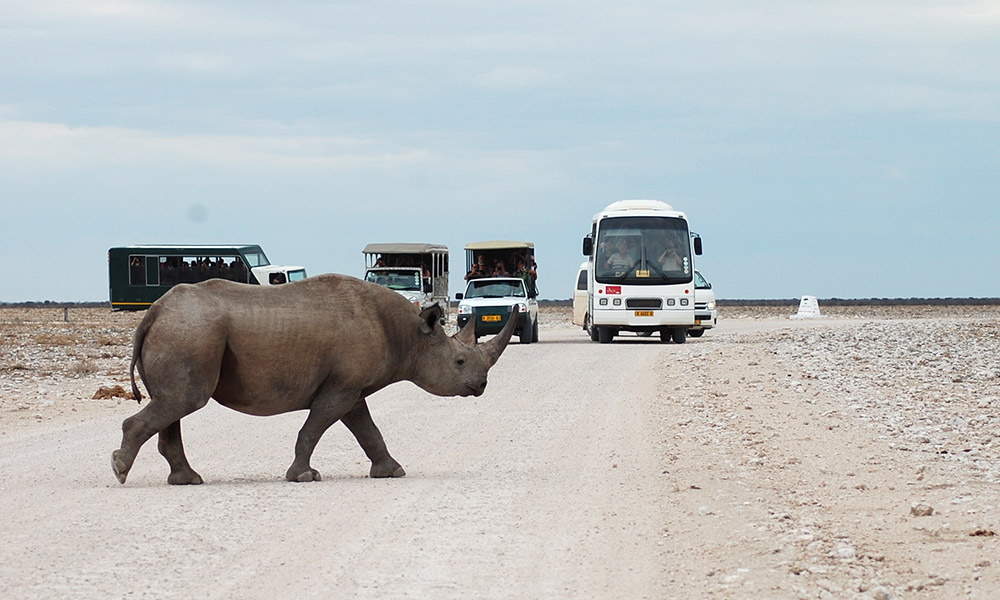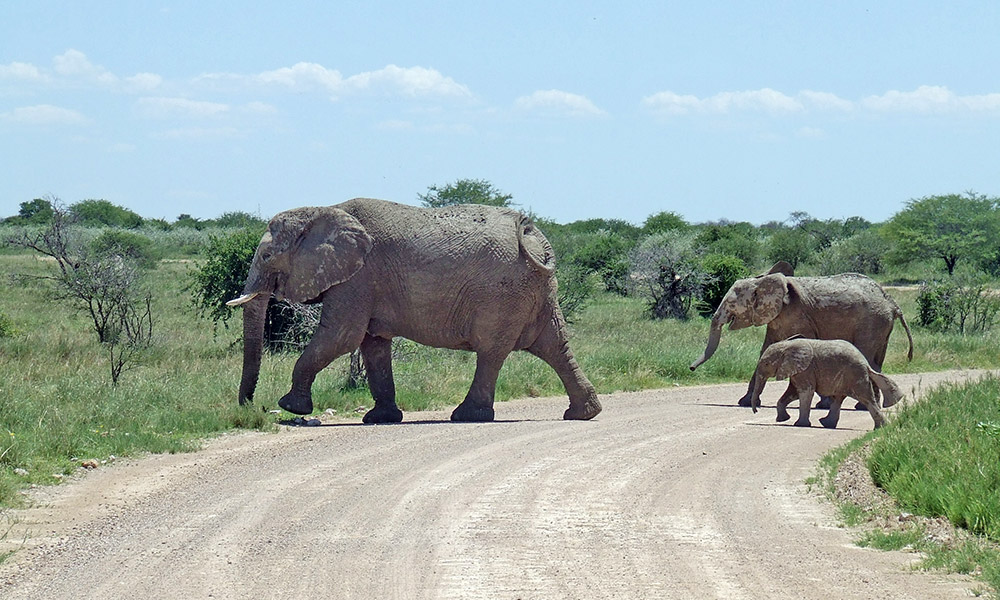
Many people on a Namibia safari are wary about encountering rhinos or elephants in Etosha National Park. Understandably so, as these are very large animals. However the risk of an accident involving these pachyderms is fortunately very low. We know of only a couple of minor incidents involving cars and rhinos, and none involving elephants.
To help ease any concerns, and help you get the most of your encounters, read our guidelines – written from years of experience:
Etosha is their home
- These animals are larger and stronger than your car, so they always deserve respect.
- To these rhinos and elephants, Etosha National Park is their home. You are a guest in their home, so they always have right of way.

Avoid disturbing them
The key to any animal encounter is to avoid disturbing the animals wherever possible. As you slowly approach an animal with your vehicle:
- So long as the animal continues doing what it was doing (eating, walking, resting), then you have not disturbed it.
- If it stops doing what it was doing and instead looks at you or runs away then you’ve entered its comfort zone and disturbed it.
How should you respond?
- With both elephants and rhinos, if you see that you’ve disturbed it but it quickly returns to what it was doing, then you should be okay to stay where you are.
- If you have disturbed it and it does not quickly return to its previous activity, then it’s not comfortable with your presence. You should give it more space by moving away slowly.
Encounters at waterholes
- At waterholes, elephants and rhinos are normally focused on getting to the waterhole, drinking, socialising, and then leaving the waterhole again. So, as long as you don’t get in their way as they arrive or leave, they probably will not even notice you’re there.
- Just don’t park your car on an elephant trail – clear tracks leading to and from waterholes, littered with lots of dung.

Encounters on roads
- Rhinos in general, and adult bull elephants, are generally solitary so they are relatively easy to watch for signs of disturbance. If they show no signs of being disturbed by your presence, you might even be able to approach more closely or drive past them slowly.
- On the other hand, breeding herds of elephants can often be large (potentially up to 25 individuals), and can be spread over both sides of a road. This makes it much more difficult to keep all the animals in your sights and to watch for animals that are disturbed by your presence. Furthermore, animals with babies are always more nervous. It is always a good idea to give breeding herds much more space, and not to attempt to drive past or through the herd.

If you follow these guidelines, and use common sense, you can enjoy some amazing sightings of rhinos and elephants in Etosha.
If you’d prefer to explore Etosha with one of our experienced Namibia safari guides, read about our Etosha day trips.

